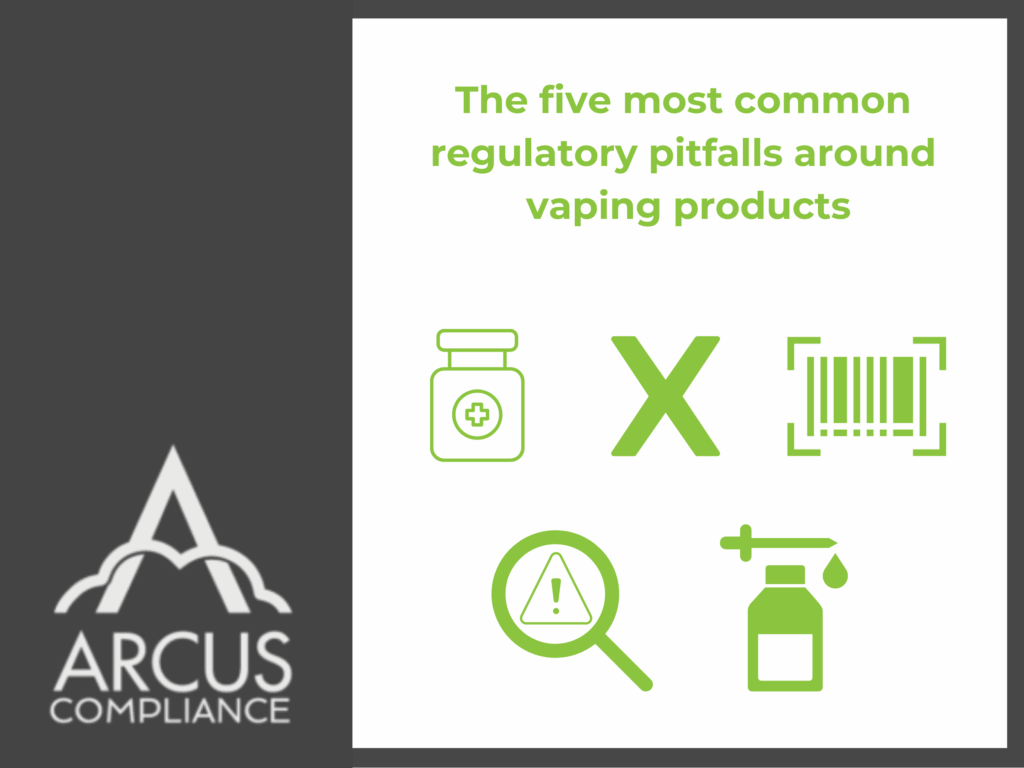Compliance experts Arcus Compliance have drawn up a list of the five most common ways in which vaping products can fall short of regulators’ requirements.
It provides wholesalers and retailers, especially convenience stores and supermarket chains, with a useful checklist they can use to challenge producers before agreeing to stock their products.
Based on industry-wide analysis carried out by Arcus Compliance, the pitfalls range from lack of systems for tracking adverse safety events to using inappropriate substances in certain markets.
Fortunately, the statutory notification process is able to counter the majority of non-compliance, according to Lee Bryan, managing director of Arcus, advisers to some of the world’s biggest brands.
He said: “Such actions tend to stem from lack of understanding of regulations rather than a deliberate attempt to cut corners, but they are likely to make the regulatory process more complex and costly.”
Bryan added: “Ensuring correct classification, labelling and packaging is an essential obligation for producers and one that also has an impact on wholesalers and retailers.
“It is critical in the safe marketing of the product since it determines what hazardous materials information needs to be communicated to end-users, including people buying from convenience stores and supermarkets.”
In the UK, the market is overseen by the Medicines and Healthcare products Regulatory Agency (MHRA), which specifies that submissions for regulatory approval for vape products must follow a strict process.
If a brand has specified the wrong product type – a common mistake – everything is held up until the error is rectified. That can prove expensive if a product launch has to be delayed.
Not adequately tracking and recording concerns raised about the safety of products, as required by the Tobacco Products Directive, can also land brands in hot water.
The five most common compliance problems, based on industry-wide analysis by Arcus Compliance, were identified as being:
- inadequate checks to ensure e-liquid recipes do not contain inappropriate substances in specific markets
- copying competitors’ labelling
- notifying the wrong product type to the regulator
- reusing former identifier codes for new products
- lacking systems for tracking adverse safety events
Bryan concluded: “Wholesalers and retailers need to ensure that they are keeping product manufacturers on their toes by insisting on the highest levels of product compliance. Knowing where they are consistently falling short in the area of compliance provides retail outlets with a checklist to ensure their own reputation is not at risk by purchasing from brand owners who are committing such regulatory breaches.”
This article appeared in Grocery Trader magazine in October 2022.
For further advice on compliance, please contact us.

